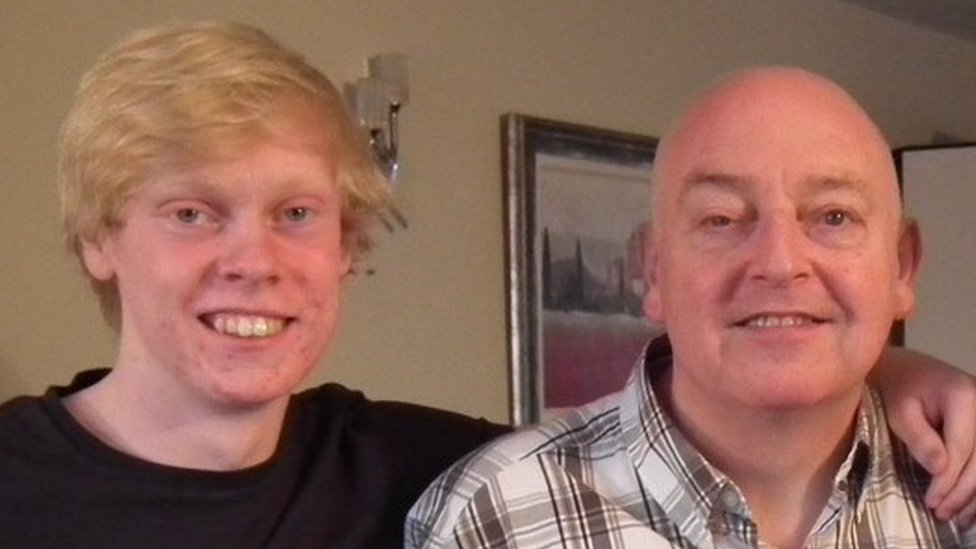CPR taught to schoolchildren
- Published

CPR classes have been held in Limavady High School
The prospect of having someone's life in your hands is scary.
But your hands could save that life - if you know what to do with them.
With that in mind, more than a thousand schoolchildren in the Limavady area have learned life-saving resuscitation skills as part of the global Restart-a-Heart Day.
The event was started by the European Resuscitation Council in 2013 and since then, it has spread around the world.
"At the moment in Northern Ireland, if you had a heart attack outside hospital, you've a less than one in 10 chance of survival," said Alastair McFarland, a teacher at Limavady High School, who has spearheaded bringing the initiative to the north west.
"By somebody getting involved, that chance doubles and it buys time for the person until the professionals get there," he said.
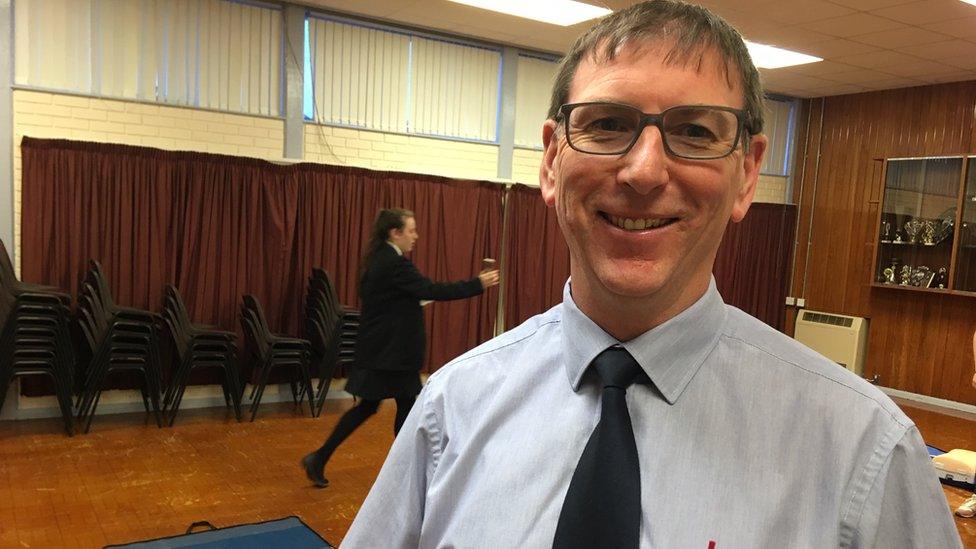
Mr McFarland has been a first aider for more than 30 years
"If you go to some other European countries, the chance of survival is 40%".
'Stand back'
The school has had a first-aid group for the past four years or so.
"It's difficult to get people involved," he said.
"In Northern Ireland, we tend to stand back and we're scared to get involved, we're scared to hurt somebody or do the wrong thing. This is just about raising that awareness that with very simple skills, you can make a big difference."
Throughout Tuesday, every 30 minutes, 30 pupils of all ages from schools across the area, both primary and secondary, descended on Limavady High School to do three full minutes of CPR on a resuscitation dummy.
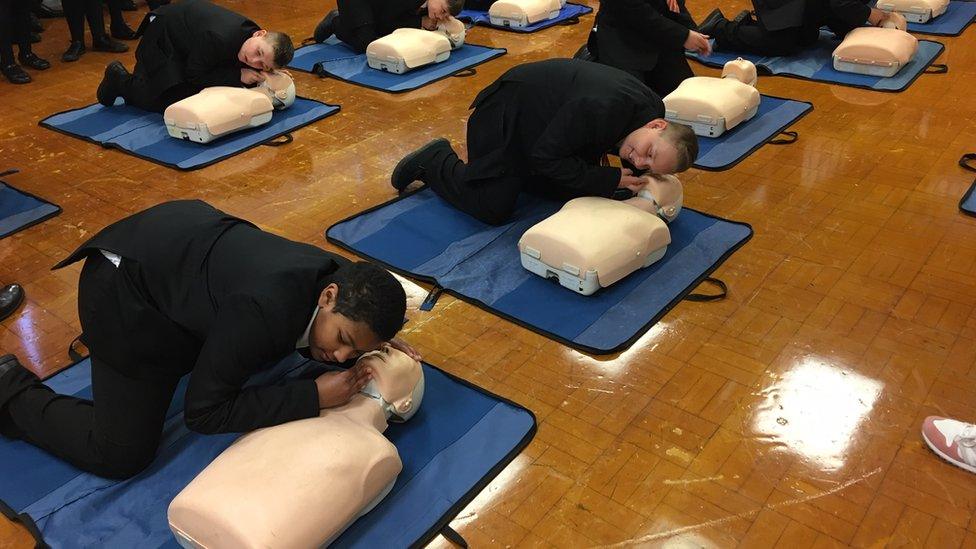
Only 10% of people who have a heart attack outside hospital survive
"It's really important," said Karen Muldoon, the Northern Ireland Ambulance Service's community resuscitation officer in the west.
"It's taking away all of those fear factors that people have with regards trying CPR.
"Here in Northern Ireland, we had 1,494 out-of-hospital cardiac arrests in the year 2017-18. Of those people, 10% actually survived to meet their families again.
"So it's about busting the myths and getting people to try CPR."
'Baby Shark'
The message of the day is that there are three stages to the process:
Check to see if the person is breathing and listen to their heart by laying your head on their chest
If not, call an ambulance
Then do compressions.
"Place one hand in the centre of the chest, on the sternum," said Ms Muldoon.
"With the other hand, interlock the fingers, lock the elbows, get up nice and straight over the patient and press down.
"We're looking for 30 compressions to two breaths, and you're actually looking to go between 5 and 6cm of depth into the chest."
There is a knack to getting the right rhythm for those 30 compressions.
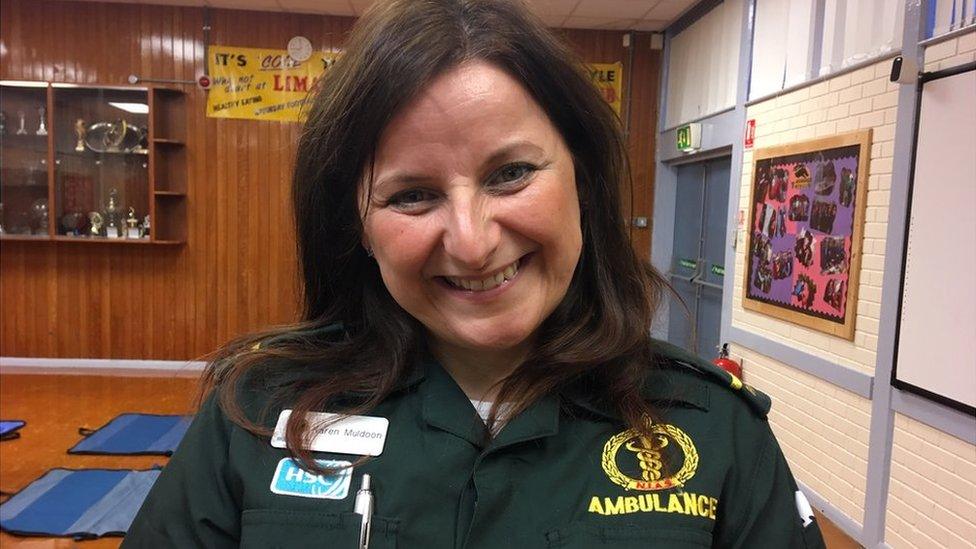
Karen Muldoon of the Northern Ireland Ambulance Service talks singing
"Stayin' Alive by the Bee Gees is good, and Baby Shark is very popular at the moment, but they both give you a nice, steady rhythm to administer compressions."
Limavady High School has had pupils go on to to become first aiders and paramedics.
Sixth former Chloe has used the training to get work with a local private first-aid company, and she's had to use her skills to save a life while at work.
"It was scary, but whenever you're trained it wasn't as bad."
- Published15 September 2018
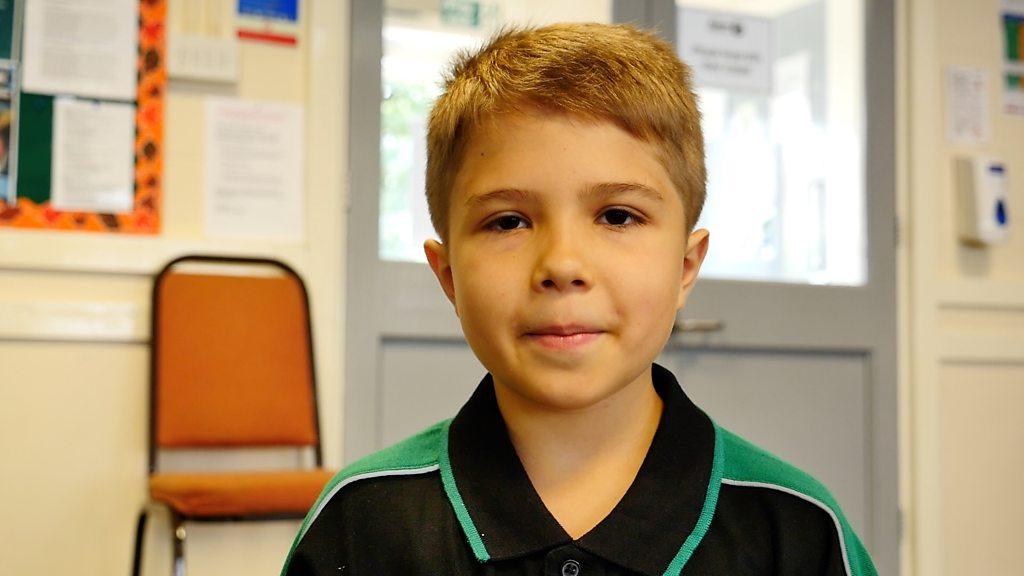
- Published16 October 2018
